I’ve been gardening here on my Zone 5 Colorado estate for over 30 years now. I have learned a whole lot about gardening in that time, and I am still learning more every year. Usually the hard way. I literally cannot count how many mistakes and blunders I have made along the way. Right plant, wrong place. Wrong plant, wrong place. Wrong plant, period. The list goes on and on. Such is the life of a gardener.
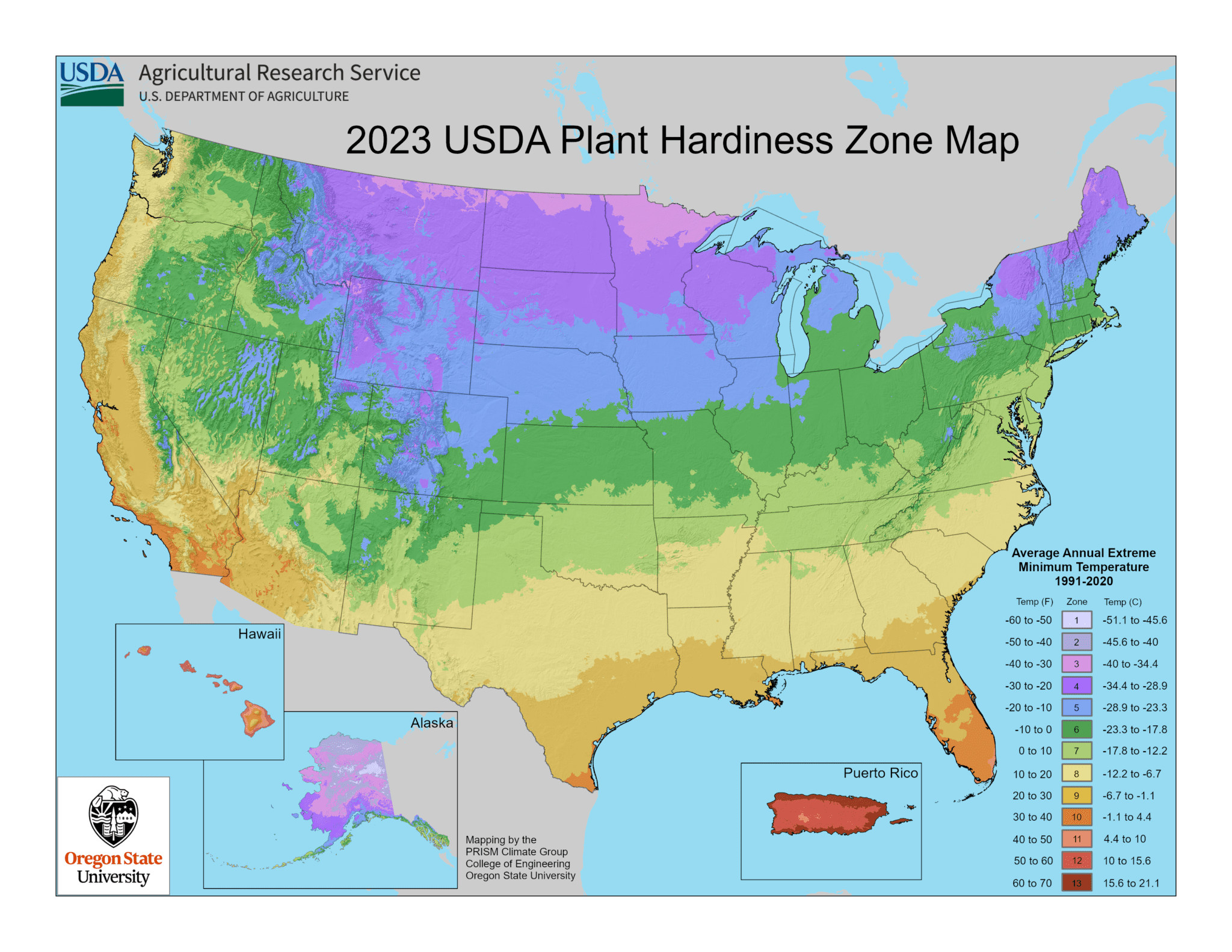
But as I have learned from these mistakes, my blunders have radically decreased. Oh, don’t get me wrong, I still screw up. But not as often, and usually not as expensively! And perhaps the biggest lesson I have learned is how to successfully garden in the conditions that we have here at the Vintage Garden. Hot, dry summers followed by bitterly cold winters, with intermittent snow cover. Snow, believe it or not, can act as an insulating layer for plants during cold spells. Lack of snow cover can sometimes be hard on plants. Without a consistent insulating layer of snow, plants can literally “heave” themselves out of the ground during the temperate swings we go through here during Colorado’s winters.
But perhaps the biggest lesson I have learned over the years, is to try and use more plants that are waterwise.
Defining the term “waterwise”
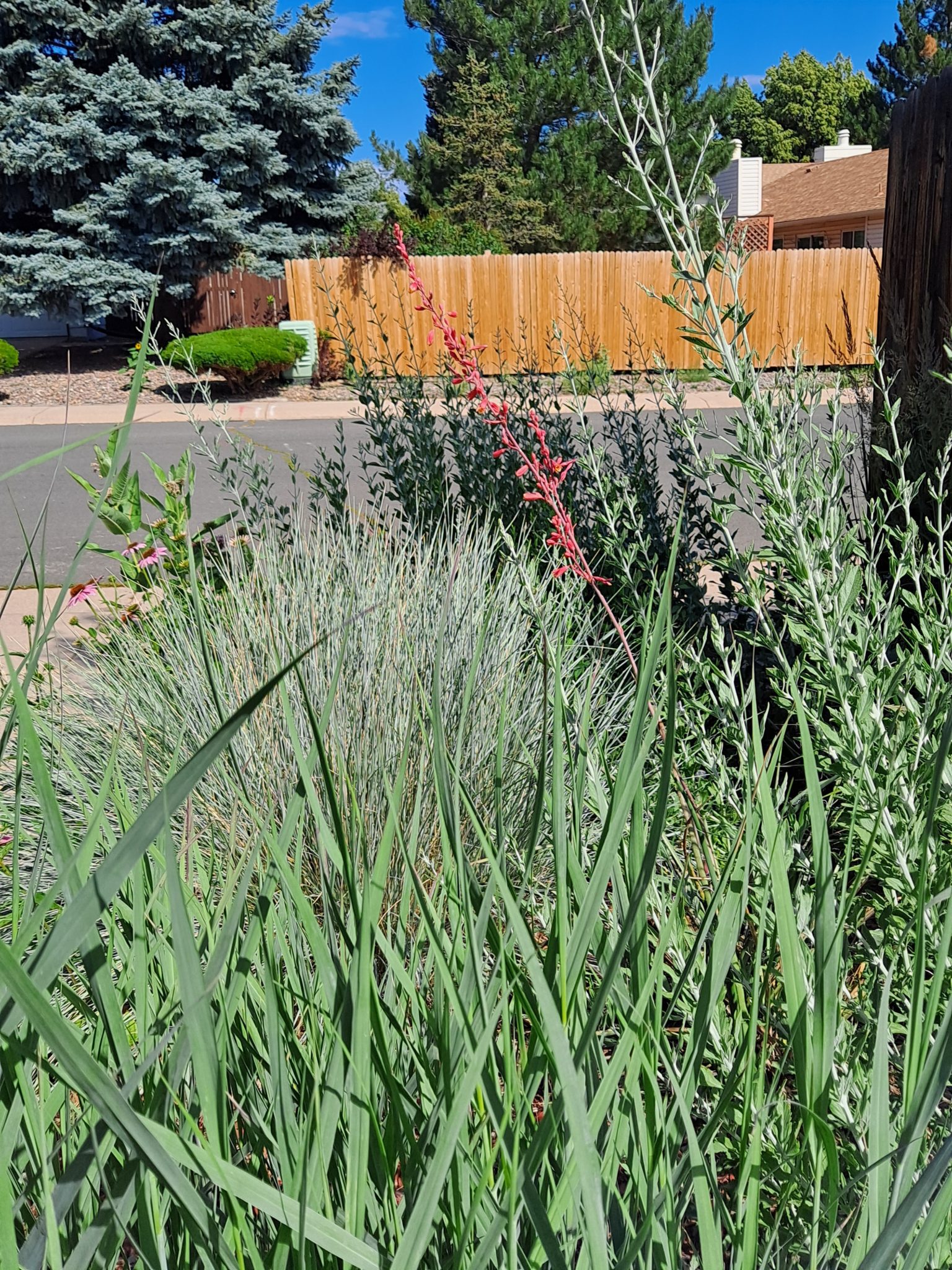
Before I go further, I want to define what the term “waterwise” means for me here in my Colorado Front Range garden. And I mention my geographical location because what is waterwise in my area may be anything but in other locales.
Alright, so what do I mean by waterwise? A waterwise plant is one that can survive on natural precipitation (rain & snow) along with low-to-moderate supplemental irrigation. Xeric plants, on the other hand, are able to rely solely on what nature provides. Cactus, yuccas and agaves are examples of xeric plants. Don’t get me wrong, they wouldn’t object to a little supplemental water, but they don’t need it.
However, like all things in life, this definition is not so simple or black-and-white. But for the purpose of keeping things simple on this post, let us all agree that all xeric plants are waterwise but not all waterwise plants are xeric.
And what constitutes a non-waterwise plant? Well, where I live, plants such as hostas, Siberian irises (not to be confused with bearded irises, which are very waterwise), Joe-Pye weed, trout-lilies and the like are definitely NOT waterwise. I can grow them here, in a fact, I have. But they were never happy, and they required lots of supplemental watering. Plant them in New England, on the other hand, and they would probably get by just fine with moderate-to-low supplemental moisture. This knowledge has been hard earned. It goes back to that whole right plant, right place lesson I’ve had to learn over the years.
So MrVintageMan, I imagine you asking me, what are some of your favorite waterwise perennials?
Before I get into my favorite waterwise plants, let me add a little backstory. Some time ago, while looking over the Vintage garden, I realized that there are several plants that I use over and over again. The reasons why I utilize the samae plants repeatedly are numerous and varied. All of them are tough and can handle whatever Colorado’s weather and soil conditions throw at them. Most are fairly long-lived plants. Nothing pisses me off more than finding out a plant that I have spent a fair chunk of change on only lives for a couple of years.
All of these plants on my list have wonderful blooms, some of which can last for weeks, or even months, on end.
Also, these plants have no series disease or pest problems. Neither are they themselves pests, or “thugs”, in the gardens. Most magazine articles or online catalogs you might read are so busy extolling the benefits of this or that plant, they often neglect to mention their downsides. I will let you know what hazards, if any, I have encountered with my favorite plants.
In no particular order, I present to you MrVintageMan’s five favorite waterwise perennials.
* Brunnera (Brun-er-rah), or Siberian forget-me-not…
Brunnera, also known as ‘Siberian forget-me-not’ and/or ‘False forget-me-not’, gets those monikers because its flowers look almost identical to the real forget-me-nots. Unlike the real forget-me-nots, which require moist and acidic soil, brunnera is able to tolerate the dry and alkaline soil in my garden.
Brunnera blooms in mid-spring, usually about the same time that tulips flower. Interestingly, that is also the same time real forget-me-nots bloom. Their fuzzy, heart shaped leaves are reminiscent of hostas. In fact, they are a very good substitute for hostas in drier locales. Like hostas, they generally prefer partly shady spots. A north facing border, or under trees, would be ideal. The blooms, barring a late spring freeze or snowstorm, usually last a couple of weeks.
The plant, including the blooms, gets to about 18″ in height and about 2 feet wide. Their leaves, as I mentioned above, are fuzzy and heart shaped. Most years the leaves get to about the size of my palm. Last year, when we had an epically wet spring and early summer, the leaves grew bigger than my whole hand!
On the downside, I will note that brunnera is probably the thirstiest plant on my list. Not to say they can’t handle heat and drought. It’s just that if they don’t get enough supplemental water during the hottest part of summer, the leaves will turn brown and the plants will go dormant for the rest of the year. All that will be left are brown shriveled leaves. They are still alive, but going dormant is how they survive dry spells. They’ll return, healthy and hardy, in the spring.
If you want to the plants to stick around until autumn, just give them some extra water every couple of weeks until temperatures moderate.
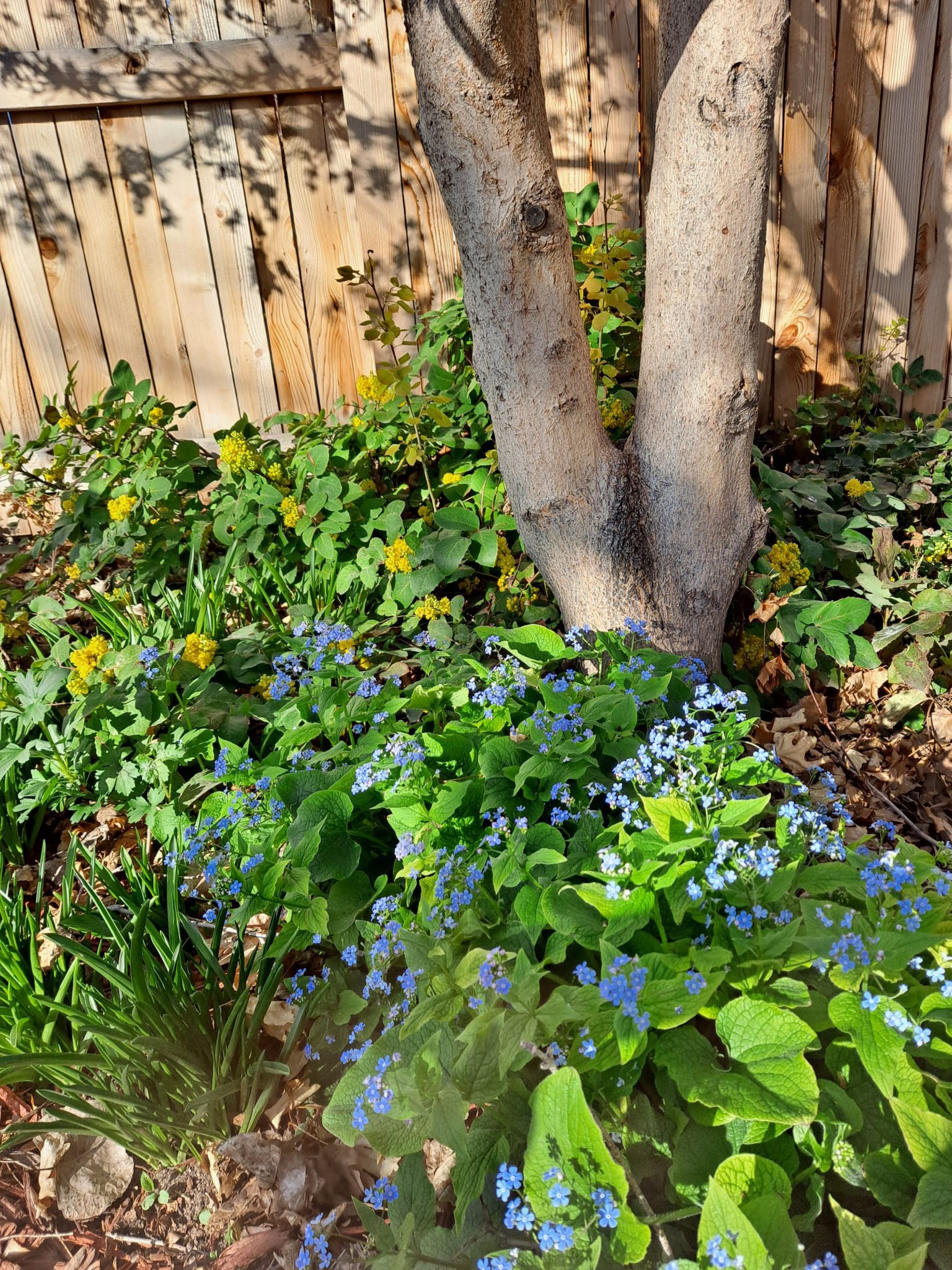
* Achillea, a.k.a, Yarrow…
Yarrow hails from the rocky and craggy regions of the Mediterranean. It times past, yarrow was used medicinally. The ancient Greeks and Romans used the leaves of this plant to make a poultice to stop blood loss. According to modern research, the plant is indeed quite effective at stopping bleeding from minor wounds.
An undoubtably intriguing fact, but my interest in yarrows has less to do with medicine, and more to do that these plants can stay in bloom for over 2 months straight! Even in the worst heat and dry spells summer can throw at them, their yellow plate-like flowers stay strong. That is some serious staying power. The actual flowers of yarrow are itty-bitty, almost microscopic. What we think of as their flowerheads is actually a large cluster of the tiny blooms, formed into an umbel (flathead) shape. Yarrow flowers come mostly in the yellow-to-red spectrum of the color wheel. Some are a bright white, and there are a few strains that are somewhat purplish.
The color you are mostly likely to see in most gardens and in parks are the yellow ones. I have two yellow varieties here in the Vintage Garden: ‘Coronation Gold’ and ‘Moonshine”. I am more partial to ‘Coronation Gold’ because its bloom are a brighter and stronger yellow. The sunlight can be especially intense here in Colorado’s thin atmosphere, and softer colors tend to get washed out in the bright light. Coronation Gold’s foliage is fernlike and is a subtle olive-gray in color.
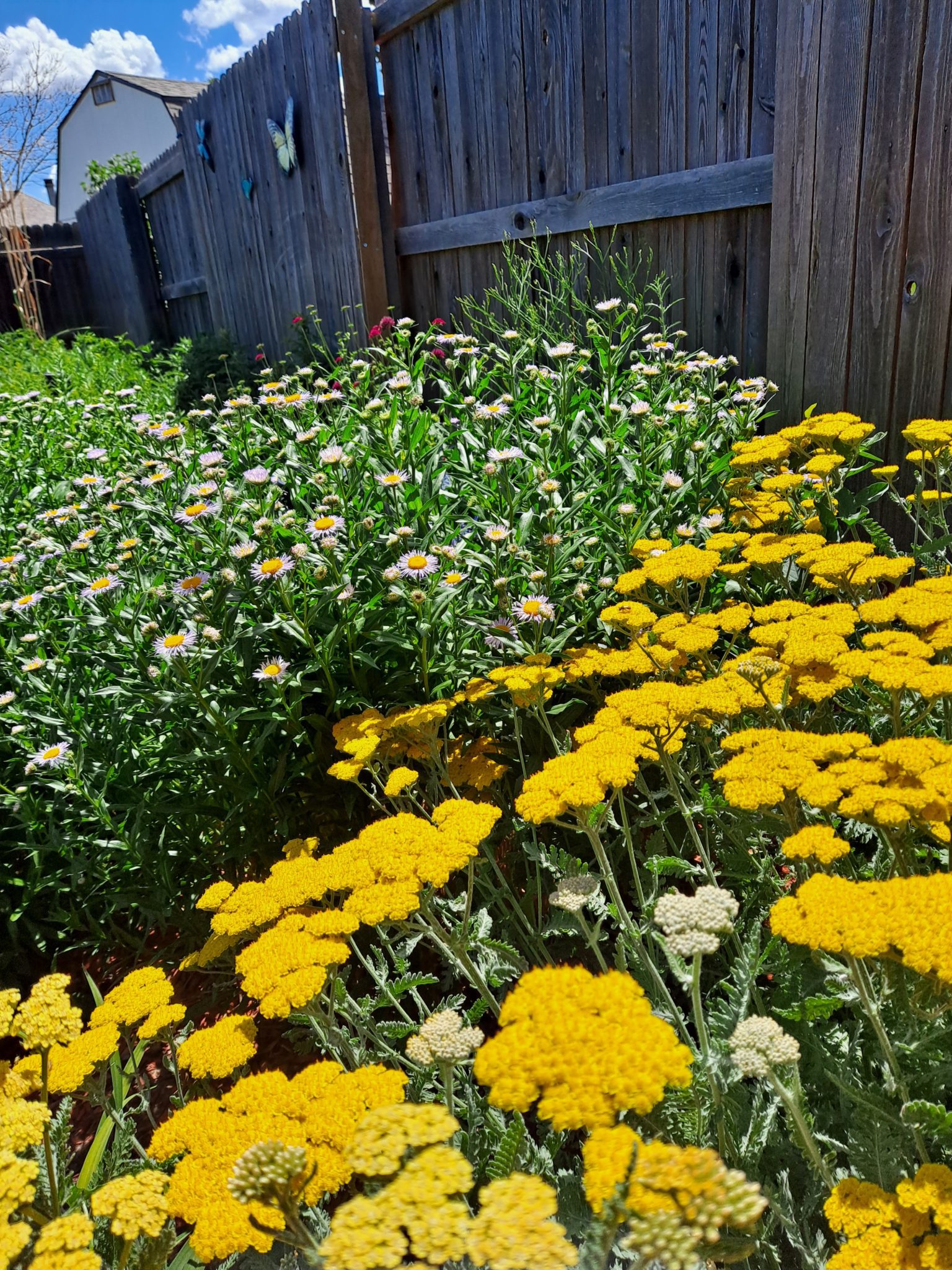
‘Moonshine’ yarrow flowerheads are a softer yellow than Coronation Gold, and the foliage color is greyer than its cousin. It too has fernlike foliage. While I enjoy the aesthetic look of Coronation Gold more, I enjoy Moonshine very much. I think Moonshine may be a little bit more waterwise than Coronation Gold.
Both of my yarrows start to bloom around mid-June, and usually finish up about the first week of August.
On the downside, once the flowers of yarrow are done blooming for the summer, their umbels turn a dirty brown color. They stay this color for the rest of the year. You can deadhead them if you like (but they won’t rebloom), but I leave the flowerheads on because they do provide a modicum of winter interest.
Also, yarrows can self-seed fairly prolifically. Not aggressively; it’s not a thug. But it can move into areas you don’t want it and take over. Fortunately, it is easy to pull out. I actually had yarrow spread into the lawn in the front yard some years ago, but I left it alone. It stayed under control because I mowed it along with the grass, and that section of lawn stayed green(ish) through the hottest part of the summer. It mingled so well with the grass, that unless you looked really closely you couldn’t even notice it.
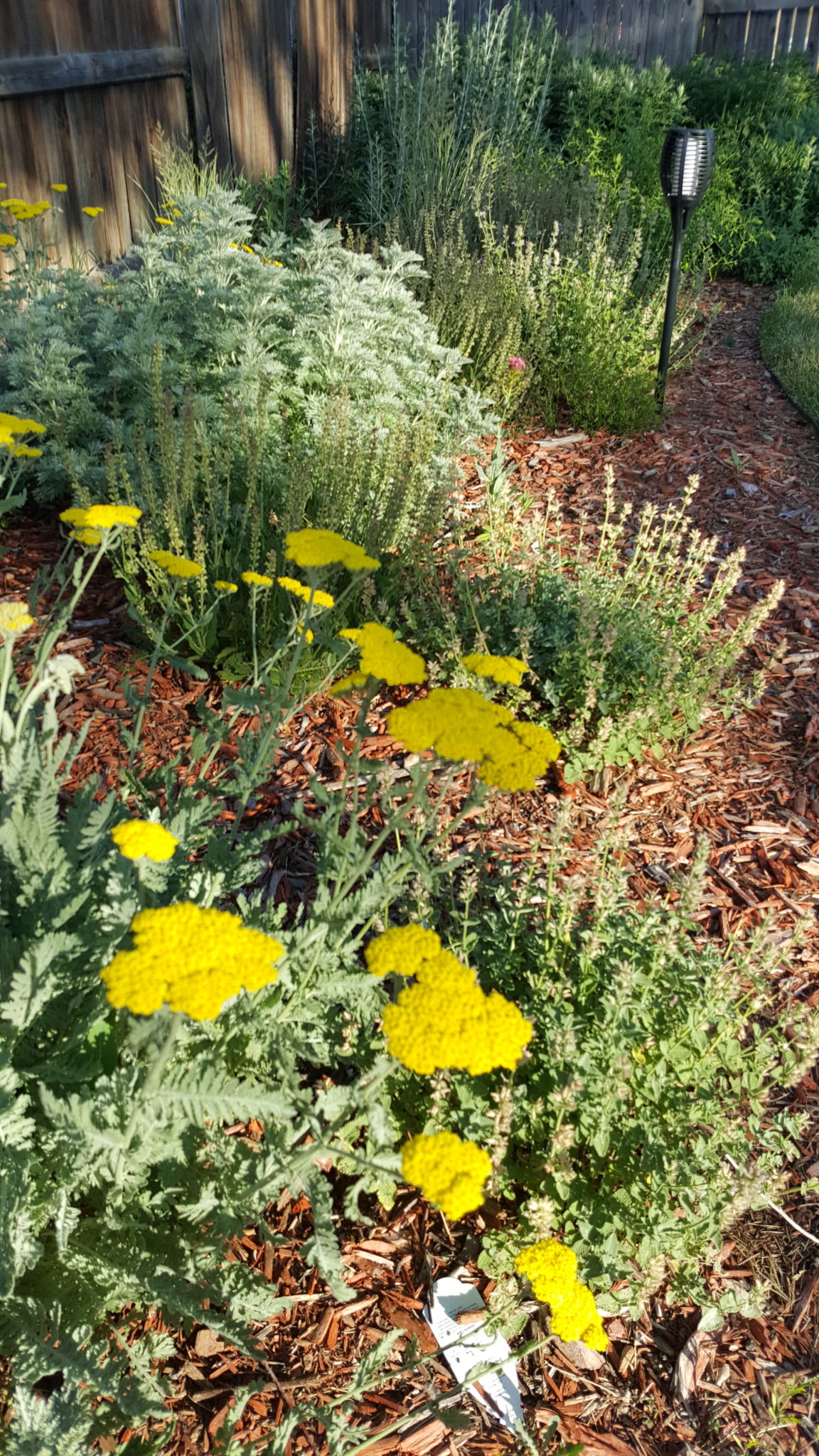
* Upright Sedums…
Sedums come in all shapes and size, from prostate groundcovers all the way to the upright varieties that can reach 2 to 3 feet in height. Their flowers come in all manner of shapes as well. One thing they all have in common is thick, fleshy leaves. Sedums are a succulent, much like a cactus. And like other succulents, they store water in those thick leaves, making them very waterwise.
I have several varieties of upright sedums: the classic ‘Autumn Joy’, whose flattop flowerheads start to turn a deep red in autumn when the temps drop. I also have ‘Matrona’, which also colors up nicely in the fall but in a more mohagany hue. Its fleshy leaves will sometimes turn a subtle shade of yellow at the same time. Then there is ‘Purple Emperor’, which has purple deep purple leaves that last into winter. Their seedheads turn a more burgundy red in fall.
Many of the upright sedums are great for providing fall color. They provide quite the strong architectural presence in the garden as well. They are tough as nails, and once established are almost xeric. And they are low maintenance. Don’t cut them down until spring, so as to provide winter interest.
I honestly cannot think of any issues that these plants have given me over the years. They are a nearly perfect plant.
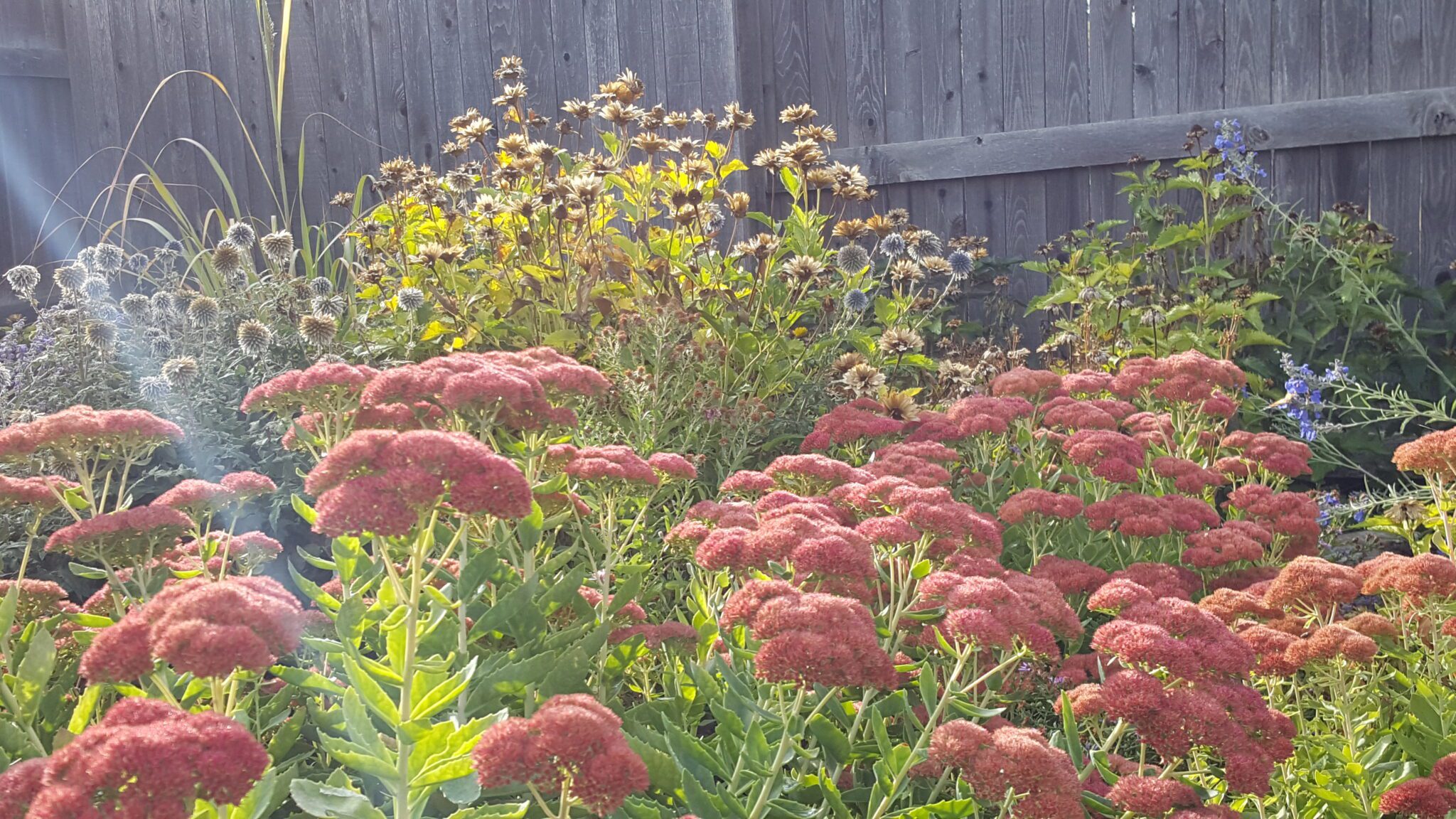
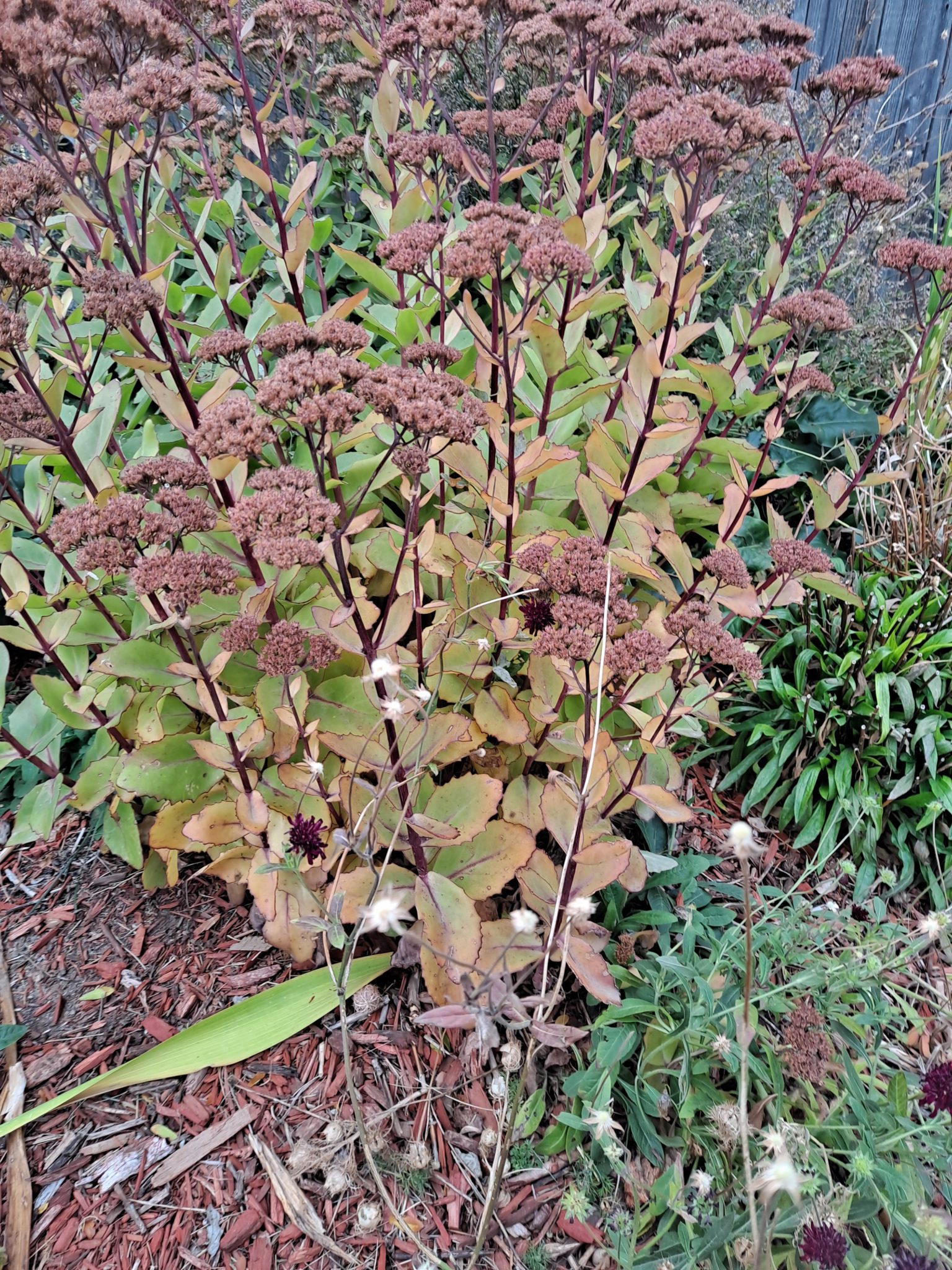
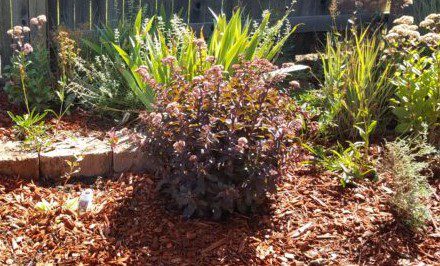
* Russian Sage

Russian sage (Perovskia atriplicifolia) is perhaps the most versatile of all the waterwise plants I grow. It combines well with so many other plants. Its tall, airy flower spikes contrast perfectly with the daisy-like flowers of asters and black-eyed Susan’s, the umbel flowers of sedums and yarrows (see above), and the rapier blades of ornamental grasses.
It’s also a long bloomer. The purple flowers start to appear usually in late July at my place and extend well into autumn. The flowers give off a strong sage smell (hence the name) when crushed. The fine, grey-green leaves of the plant also have a wonderful odor. I should point out that this plant is NOT a sage and is considered toxic. So don’t eat it!
Russian sage is related to the mint family, and like all mints it can spread rather easily. Fortunately, it’s not too hard to dig out any unwanted seedlings, if you get to them early. This plant can establish some pretty sizable strong roots, as I found out when I had to dig some out of my front yard last summer.
The only care I give mine is to prune it back to about six inches above ground level in early spring. Most varieties grow to about 4 feet high, and 2-3 feet wide. When we renovated the front yard last year, I opted to go with a smaller variety called ‘Little Spires’. This variety only gets to about 2.5 feet tall by 2 feet wide.
* Ornamental Grasses
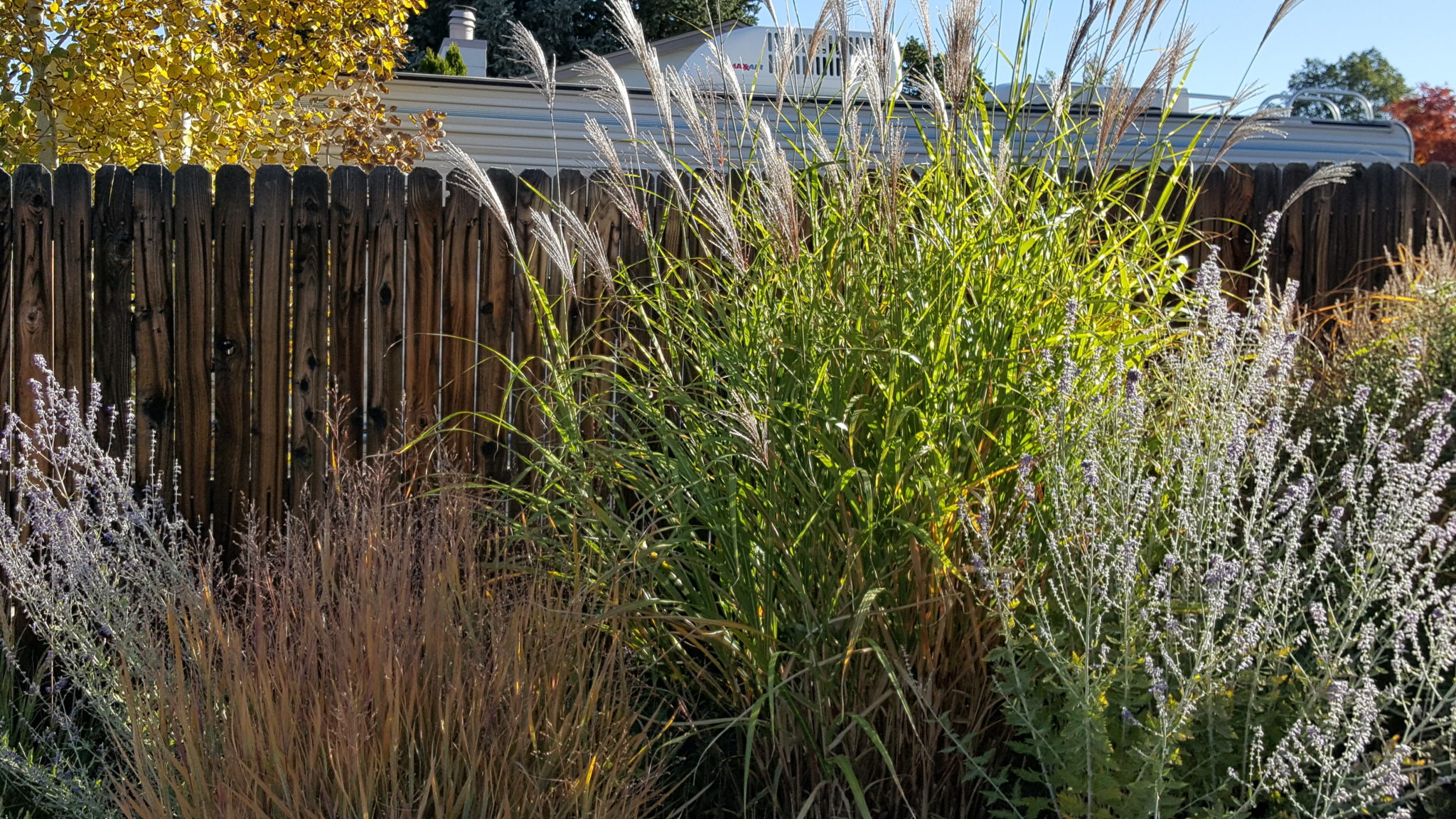
Last, but certainly not least, are the ornamental grasses. I have several varieties scattered throughout the Vintage garden. Ornamental grasses are not usually the showiest of plants, even when in flower. But they great for tying a garden border together. They work well with almost all flowering plants and can provide visual interest throughout much of the growing season. If you don’t cut them down in the fall, they can even provide visual interest in winter. Or at least they can until an incredibly heavy early spring snow smashes them into the ground.
All the grasses I grow are waterwise to some degree or another. Among the hardiest are the Switch grasses (Panicum virgatum) and the Little Bluestems (Schizachyrium scoparium). Blue oat grasses (Helictotrichon sempervirens) are very waterwise, and I grow a couple in the very dry driveway border. I also have a rather large Miscanthus (variety unknown) that does quite well in the driveway border, which is a bit of a surprise. Miscanthus is not the most waterwise grass, but it has done quite well on very little supplemental water.
But the species of ornamental grass that I grow the most in the Vintage garden is ‘Karl Foerster’ feather reed grass (Calamagrostis x acutiflora). Feather reed grass is only moderately waterwise. But it thrives quite well on just a few inches of supplemental water every 3 to 4 weeks.
I particularly like feather reed grass because it’s a “cool season” plant. That means it gets going in mid-spring when the temps are cooler, as opposed to most of the other grasses in my yard that don’t typically break dormancy until late May or early June. Thus, feather reed grasses have already set their plumes (flowers) by mid-summer. Most of the other grasses don’t bloom until late August to early September. The earlier blooms of feather reed grasses provide a focal point during the doldrums of high summer.
In good years, their foliage turns a nice yellow color in the fall. I can spread by rhizomes, so if it starts moving into areas you don’t want it, just dig the offending clump out.
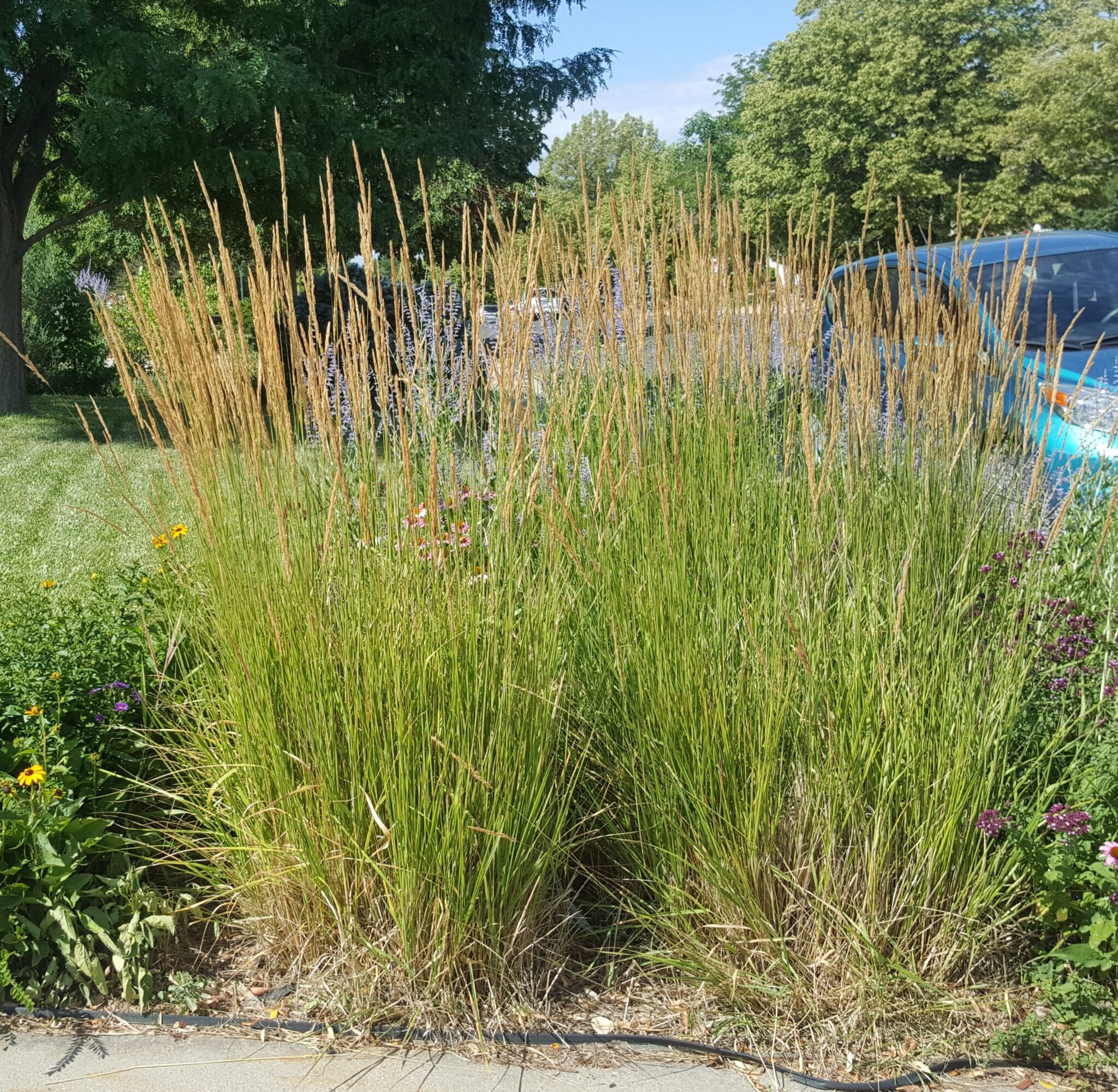
Conclusion
So, there you have it, my 5 favorite waterwise perennials. There are other waterwise plants that I really like and considered putting on the list, but for a variety of reasons they didn’t make the cut.
As a side note, March has arrived! Spring just a little over two weeks away. The garden season has returned!

